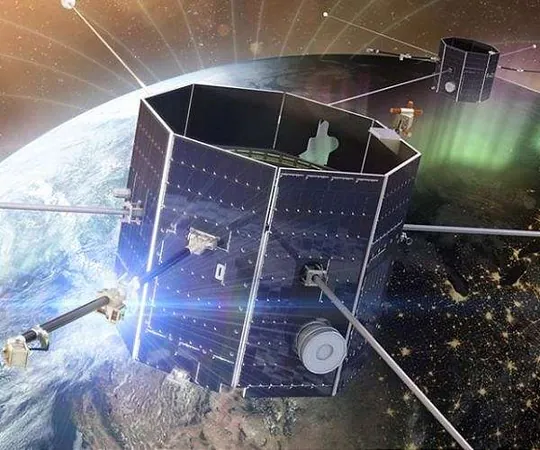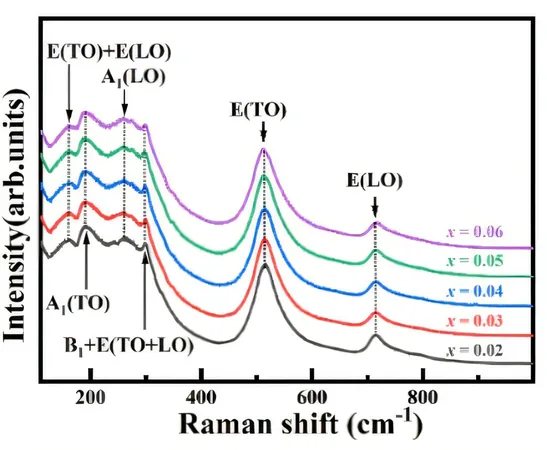
NASA's TRACERS Mission Set to Transform Our Understanding of Space Weather
2024-11-13
Author: Daniel
Introduction
Millennium Space Systems, a subsidiary of Boeing, has reached a significant milestone by successfully completing two spacecraft designed for NASA's ambitious TRACERS mission. The Tandem Reconnection and Cusp Electrodynamics Reconnaissance Satellites (TRACERS) are poised to explore the critical relationship between solar wind and the Earth's magnetic field, a key factor in space weather phenomena that can impact satellite operations and communication systems.
Importance of the Mission
CEO of Millennium Space Systems, Dave Machuga, emphasized the mission's importance, stating, "TRACERS will ultimately inform how we understand space weather. This knowledge is crucial for national security, as it provides insights into the environment in which all satellites operate."
Spacecraft Details
The spacecraft are currently undergoing the integration of advanced instruments meant to measure variations in magnetic and electric fields, analyze plasma particles, and examine wave activities in orbit. Following integration, these spacecraft will face a battery of rigorous environmental tests to ensure they can withstand the conditions of space before being transported to Vandenberg Space Force Base for launch.
Scientific Goals
David Miles, the Principal Investigator of the TRACERS mission and an associate professor at the University of Iowa, expressed that "TRACERS will determine fundamental properties of the process that connects the solar wind to near-Earth space and ultimately drives space weather." This understanding is part of a larger objective outlined in NASA’s Decadal Strategy for Solar and Space Physics, aimed at enhancing our knowledge of the space weather environment.
Operational Focus
Once launched into a sun-synchronous orbit, the TRACERS spacecraft will be operated by Millennium Space Systems, focusing their observations on the polar cusp regions of Earth’s magnetic field. These regions open up above the north and south magnetic poles, allowing for unique data collection opportunities.
Mission Complexity
Richard Prasad, the TRACERS program manager, highlighted the complexity of the mission: "The TRACERS Instrument Suite incorporates five different instruments from four different institutions, each presenting unique accommodation challenges." To meet the mission's strict specifications, Millennium adapted a standard ALTAIR bus to function as a spin-stabilized platform, strictly adhering to magnetic and electrostatic cleanliness requirements.
Core Objectives
The core mission objective is to gather in-depth data on magnetic reconnection and cusp electrodynamics, which are vital for understanding the dynamics of space weather. By delving into the interactions between solar wind and the magnetosphere in the cusp regions, TRACERS aims to elevate our understanding of Earth's magnetosphere and improve space weather forecasting. This knowledge is increasingly critical as society relies more heavily on technology and infrastructure sensitive to space weather effects.
Conclusion
The TRACERS mission, spearheaded by the University of Iowa, is managed by the Southwest Research Institute located in San Antonio, Texas, and is overseen by NASA's Goddard Space Flight Center through its Heliophysics Explorers Program Office. As humanity continues to navigate challenges posed by a dynamic space environment, missions like TRACERS promise to deliver vital insights that could safeguard our technological advances.





 Brasil (PT)
Brasil (PT)
 Canada (EN)
Canada (EN)
 Chile (ES)
Chile (ES)
 España (ES)
España (ES)
 France (FR)
France (FR)
 Hong Kong (EN)
Hong Kong (EN)
 Italia (IT)
Italia (IT)
 日本 (JA)
日本 (JA)
 Magyarország (HU)
Magyarország (HU)
 Norge (NO)
Norge (NO)
 Polska (PL)
Polska (PL)
 Schweiz (DE)
Schweiz (DE)
 Singapore (EN)
Singapore (EN)
 Sverige (SV)
Sverige (SV)
 Suomi (FI)
Suomi (FI)
 Türkiye (TR)
Türkiye (TR)